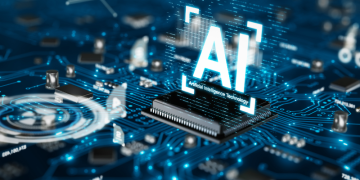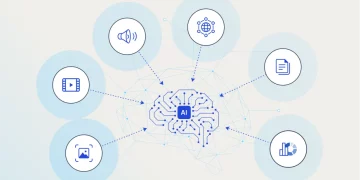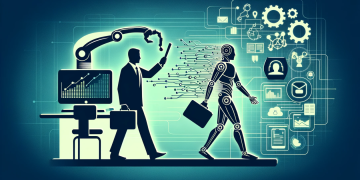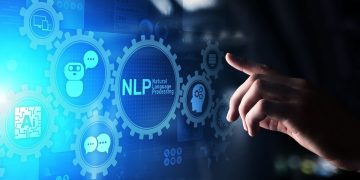Introduction
Artificial Intelligence (AI) stands poised on the threshold of what many experts call its “next golden era.” As breakthroughs accelerate and applications expand across industries, the competitive dynamics within the AI ecosystem are evolving rapidly. But who will lead this transformative phase? Will the giants of today continue to dominate, or will new players and emerging technologies reshape the hierarchy? This article explores the future competitive landscape of AI by analyzing which companies and technological trends are set to define the next decade of innovation, value creation, and global influence.
1. The Big Tech Titans: Sustaining Dominance Through Scale and Investment
The current AI powerhouse companies—Google (Alphabet), Microsoft, Amazon, Meta, and NVIDIA—are investing billions annually to maintain and extend their leadership. Their strengths include:
- Massive computing infrastructure: Owning global cloud platforms (Azure, AWS, Google Cloud) that provide scalable training and deployment environments.
- Proprietary datasets: Access to unprecedented volumes of diverse, high-quality data.
- Talent acquisition: Hiring world-class AI researchers and engineers.
- End-to-end AI stacks: Offering integrated tools from foundational models to industry-specific applications.
Outlook:
These giants will likely continue to lead in:
- Large-scale foundation models (e.g., GPT, PaLM, Claude)
- AI infrastructure and cloud services
- AI-driven consumer products and enterprise software
However, their dominance depends on navigating challenges like regulation, ethical scrutiny, and fostering innovation beyond their internal cultures.
2. The Rise of Specialized AI Companies
Alongside the tech giants, a growing cohort of specialized AI companies is carving out niches by focusing on vertical-specific or technology-specific solutions.
Examples:
- OpenAI: Originally a research lab, now a commercial leader in large language models with wide API adoption.
- Anthropic: Emphasizes AI safety and alignment.
- UiPath: Focused on robotic process automation (RPA).
- Scale AI: Specializes in data labeling and training pipelines.
Outlook:
Specialists will compete by:
- Offering tailored AI models optimized for sectors such as healthcare, finance, manufacturing, and autonomous vehicles.
- Leading innovation in ethical AI, transparency, and interpretability.
- Collaborating with larger platforms through APIs and partnerships.
3. Emerging Technologies Shaping the Next Era
Several key technological trends will redefine the competitive playing field:
3.1 Multimodal AI
Models that can understand and generate text, images, audio, and video simultaneously will unlock new interaction paradigms and applications.
3.2 AI Agents and Autonomous Systems
Software agents capable of independent decision-making and task execution will revolutionize enterprise automation, customer service, and personal productivity.
3.3 Quantum Computing and AI
While nascent, quantum technologies promise exponential gains in AI model training speed and complexity handling.
3.4 Edge AI
Decentralized AI that operates on devices locally will grow as privacy, latency, and connectivity concerns rise.
3.5 Foundation Model Ecosystems
Platforms enabling rapid customization, fine-tuning, and integration of large pre-trained models for specific use cases.
4. The Role of Startups and Innovation Hubs
Startups will remain critical to AI’s innovation pipeline. Agile and risk-taking, startups can rapidly prototype novel architectures, applications, and business models.
Hotspots to Watch:
- Silicon Valley and Seattle (USA)
- Beijing and Shenzhen (China)
- Tel Aviv (Israel)
- Berlin (Germany)
Startup Strategies:
- Partnering with cloud providers for infrastructure access.
- Leveraging open-source AI tools to reduce costs.
- Focusing on underserved markets or specialized verticals.

5. Geopolitical and Regulatory Influences on Competition
AI is increasingly a focal point of geopolitical competition. Governments are investing heavily in national AI strategies to secure technological leadership.
- The US emphasizes innovation, private sector dynamism, and alliances.
- China pursues aggressive state-backed AI development and talent cultivation.
- The European Union leads in regulation, ethics, and data sovereignty frameworks.
These dynamics will shape which companies gain global market access and how technology flows across borders.
6. Collaboration and Ecosystem Play
Future leaders won’t only compete but also collaborate within ecosystems comprising academia, industry consortia, and open-source communities.
- Open models and shared standards will accelerate adoption.
- Cross-sector partnerships will address challenges like bias, privacy, and safety.
- Collaborative AI governance frameworks will emerge as market differentiators.
7. The Competitive Edge: Ethical AI and Trustworthiness
Trust is becoming a critical competitive factor. Companies that embed fairness, transparency, accountability, and privacy-by-design will win customer loyalty and regulatory favor.
- Transparency tools and explainable AI will become standard.
- Ethical certifications and compliance audits will influence enterprise purchasing.
- User empowerment (control over AI decisions and data) will differentiate brands.
Conclusion
The next golden era of AI will be defined by a complex interplay of scale, specialization, innovation, regulation, and trust. While the current tech giants hold a commanding position through resources and infrastructure, specialized startups and emerging technologies are poised to disrupt and diversify the landscape. Geopolitical forces and regulatory environments will further shape market dynamics, creating both barriers and opportunities.
Ultimately, the companies and technologies that succeed will be those able to combine technical excellence with ethical responsibility and ecosystem collaboration—delivering AI solutions that are not only powerful but also trustworthy and human-centered.
The race for AI dominance is just beginning, and the stakes have never been higher.











































